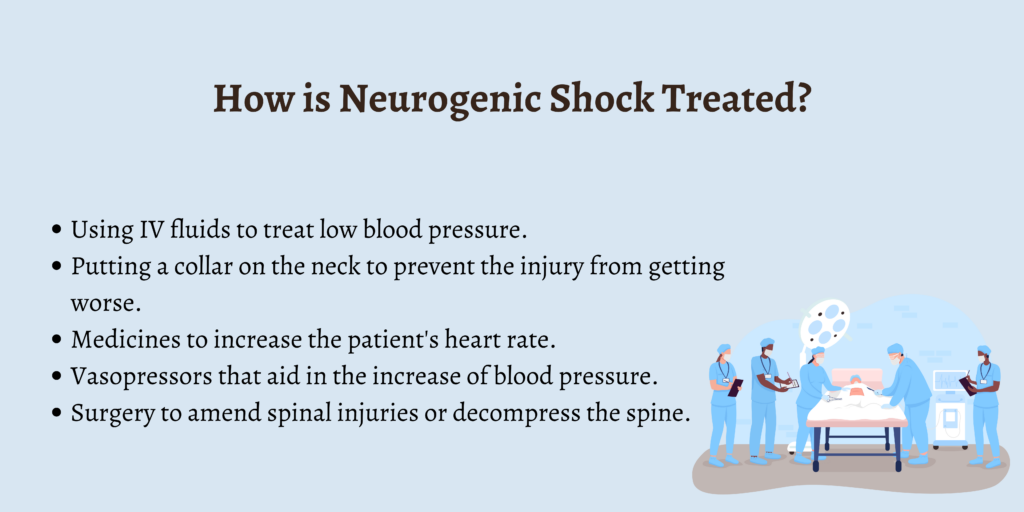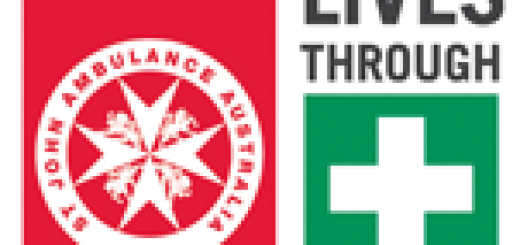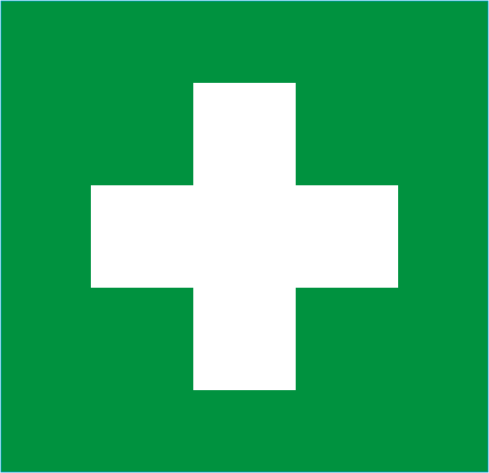What is Neurogenic Shock?
Neurogenic shock is a life-threatening condition that occurs after a spinal cord injury in which a person doesn’t have a stable temperature, blood pressure, or heart rate. A neurogenic condition is related to a human being’s nervous system.
Any disruption to a nervous system can cause:
- Reduced blood flow and low blood pressure
- Reduced heart rate
- Temperature dysregulation
- Dilated blood vessels
The reason that neurogenic shock is dangerous is because the sudden and drastic drop in a person’s blood pressure can lead to irreversible damage to the body tissues. If it’s not treated properly or on time, it can be lethal to a person’s health.
The Causes of Neurogenic Shock Include
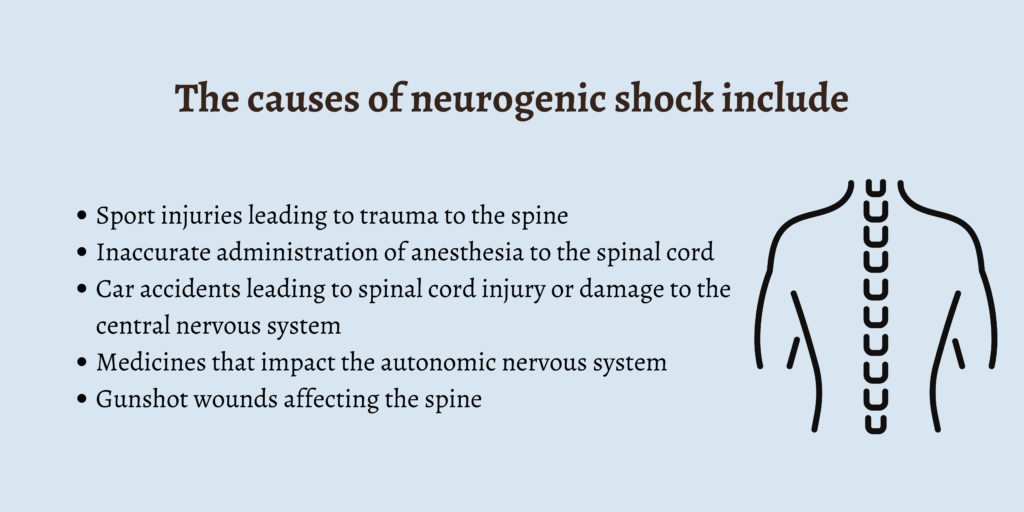
- Sport injuries leading to trauma to the spine
- Inaccurate administration of anesthesia to the spinal cord
- Car accidents leading to spinal cord injury or damage to the central nervous system
- Medicines that impact the autonomic nervous system
- Gunshot wounds affecting the spine
Symptoms of Neurogenic Shock
The symptoms of neurogenic shock include:
- Pale skin
- Vomiting
- Dizziness
- Anxiety
- Nausea
- Blank stares
- Increased sweating
- Fainting
The symptoms associated with the serious cases of neurogenic shock are as follows:
- Faint pulse
- Chest pain
- Hypothermia
- Breathing difficulties
- Cyanosis
- Weakness due to irregular blood circulation
- Slower heart rhythm
How Common is Neurogenic Shock?
Reports suggest that 19% to 31% of individuals who suffer from a spinal cord injury experience neurogenic shock. Somewhere between 8,000 to 10,000 of the American population have a spinal cord injury every year due to falls or car accidents.
How Does Neurogenic Shock Affect the Body?
When a person suffers from a spinal cord injury, it leads to the nerves being prevented from passing the command to the blood vessels to constrict. As a result of this, there is a possibility for the blood vessels to open up too much.
This reduces the individual’s blood pressure and blood flow, which causes the organs in the body to not get the required amount of oxygen.
Diagnosis of Neurogenic Shock
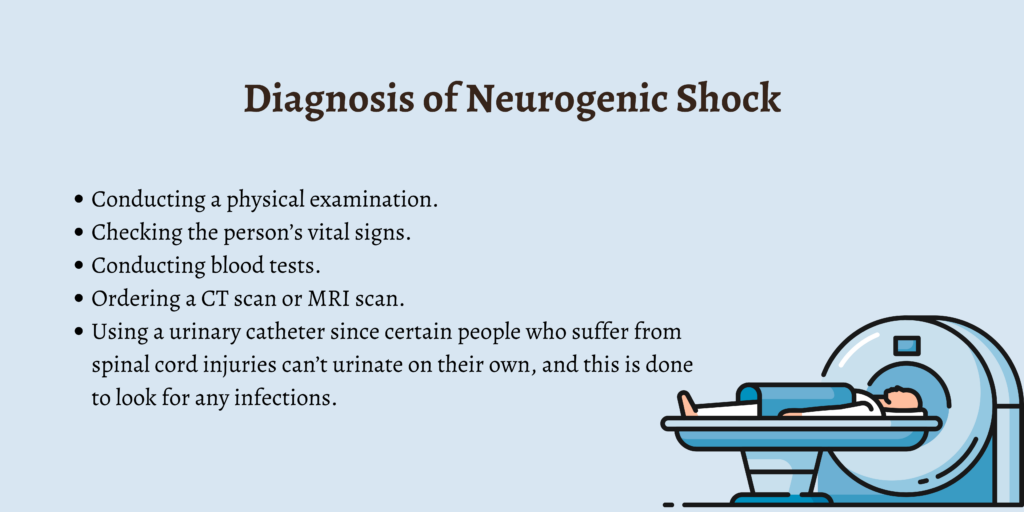
The diagnosis of neurogenic shock involves:
- Conducting a physical examination.
- Checking the person’s vital signs.
- Conducting blood tests.
- Ordering a CT scan or MRI scan.
- Using a urinary catheter since certain people who suffer from spinal cord injuries can’t urinate on their own, and this is done to look for any infections.
How is Neurogenic Shock Treated?
The treatment for neurogenic shock could involve any of the following:
- Using IV fluids to treat low blood pressure.
- Putting a collar on the neck to prevent the injury from getting worse.
- Medicines to increase the patient’s heart rate.
- Vasopressors that aid in the increase of blood pressure.
- Surgery to amend spinal injuries or decompress the spine.
Complications/Side Effects of The Treatment For Neurogenic Shock
Although the medicines given for any sort of treatment could have different side effects, a doctor will always suggest medicines where the benefits compensate for the risks that could be involved.
The IV fluids that are often given to treat neurogenic shock could cause swelling in some people.
How to Prevent Neurogenic Shock
Although neurogenic shock can’t really be predicted or prevented, there are certain precautions one can take to prevent spinal cord injuries. Here are the precautions to know about:
- Don’t forget to wear a seatbelt while driving your car or being inside a car.
- Be careful so as to save yourself from falling, even while you’re at home.
- Wear a helmet while skiing, cycling, or being on a motorcycle.
- Avoid accidents by locking away any firearms.
- Never drive after consuming drugs or alcohol or even get into a car that’s being driven by someone under the influence of such substances.
FAQs
1. What are the symptoms of neurogenic shock?
The symptoms of neurogenic shock include dizziness, nausea, fainting, and vomiting.
2. What are the causes of neurogenic shock?
The causes of neurogenic shock could be sports injuries, gunshot wounds, and car accidents.
3. Who gets affected by neurogenic shock?
The people who get affected by neurogenic shock are the ones who get hurt through a spinal cord injury.
4. How is neurogenic shock diagnosed?
Neurogenic shock is diagnosed through a physical examination, blood tests, and checking the vital signs.
5. What are the tests done to diagnose neurogenic shock?
The tests done to diagnose neurogenic shock include CT scans and MRI scans.
Conclusion
The symptoms of neurogenic shock can last for anywhere between four to five weeks. The rate at which a person recovers following the treatment administered for neurogenic shock depends on:
- The person’s age
- The way the person’s body reacts to the treatment
- The injuries caused to the individual’s organs
- The severity of the injury
- Issues like not being able to maintain balance or speak
- Other ongoing medical problems
Although every case of neurogenic shock is different, it’s vital for every person who experiences it to keep up with their physical therapy and schedule appointments with their doctor to ensure that no more health problems arise in the future.

